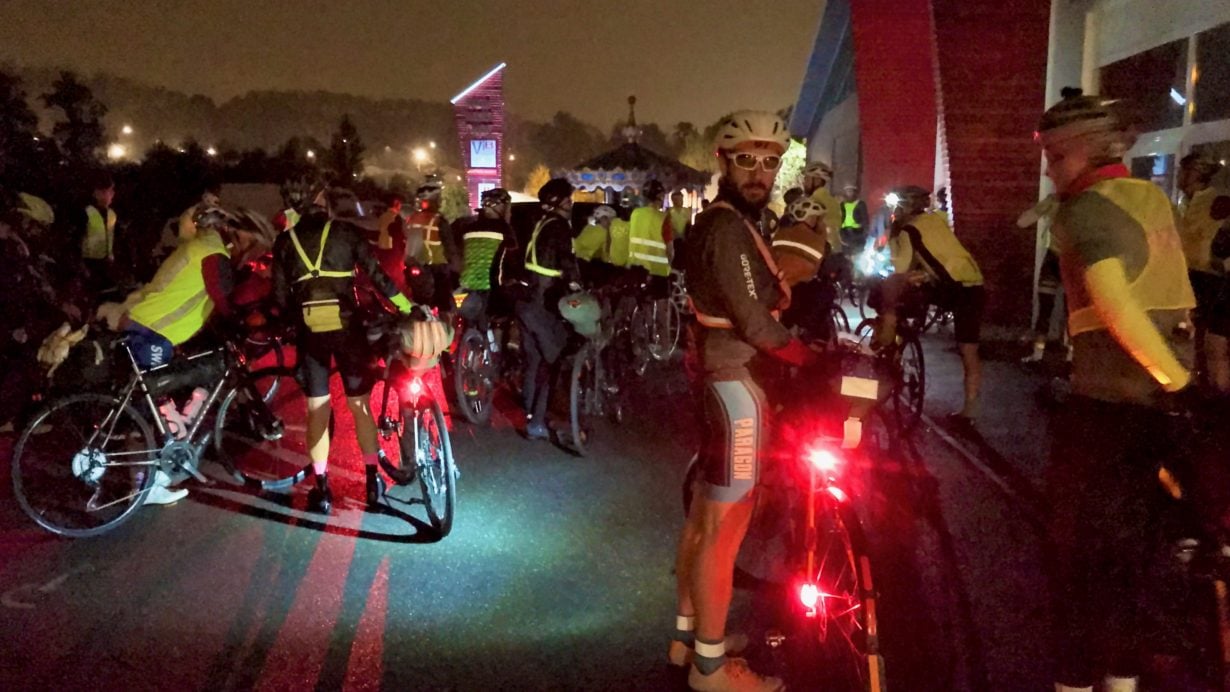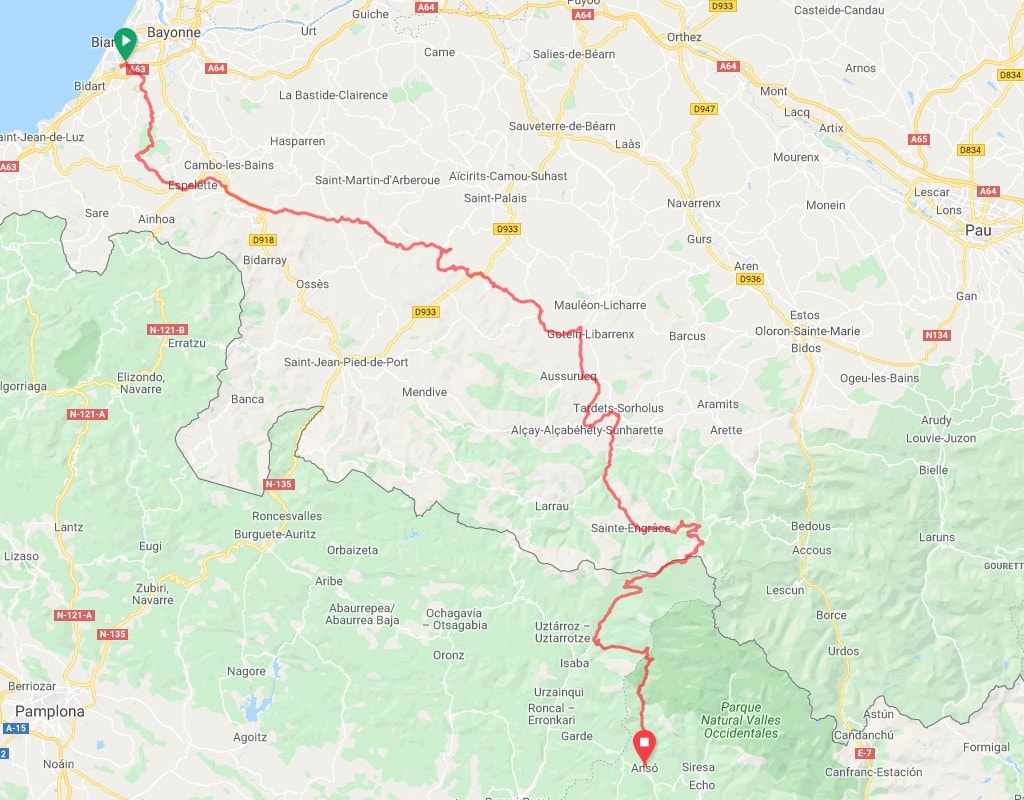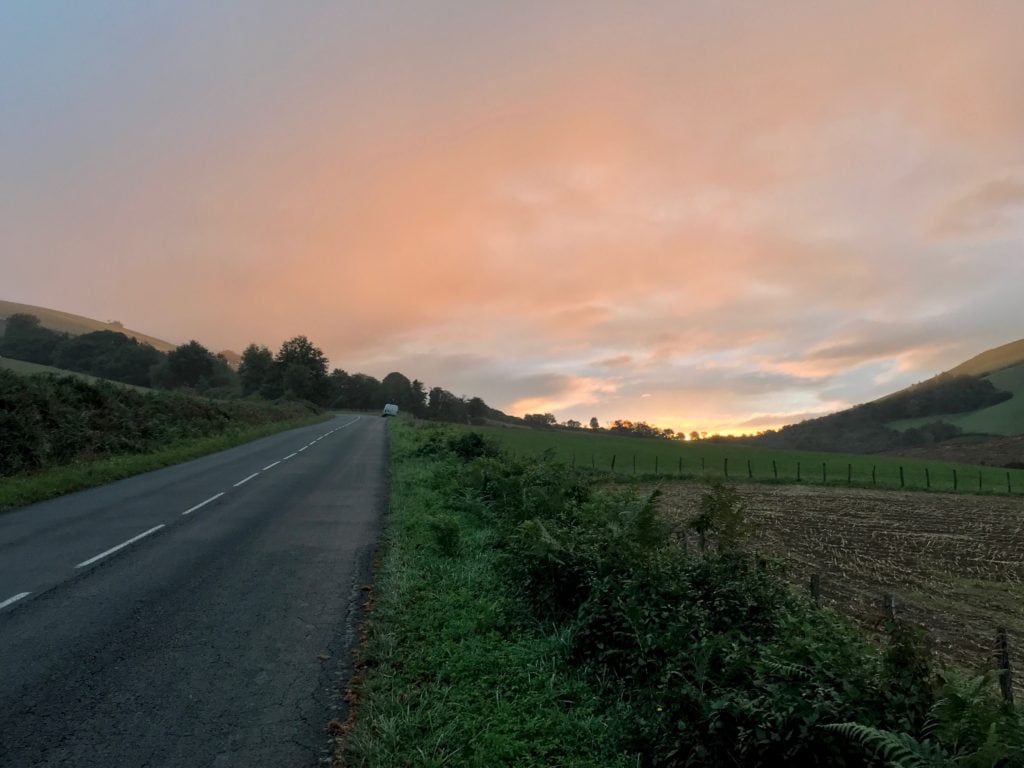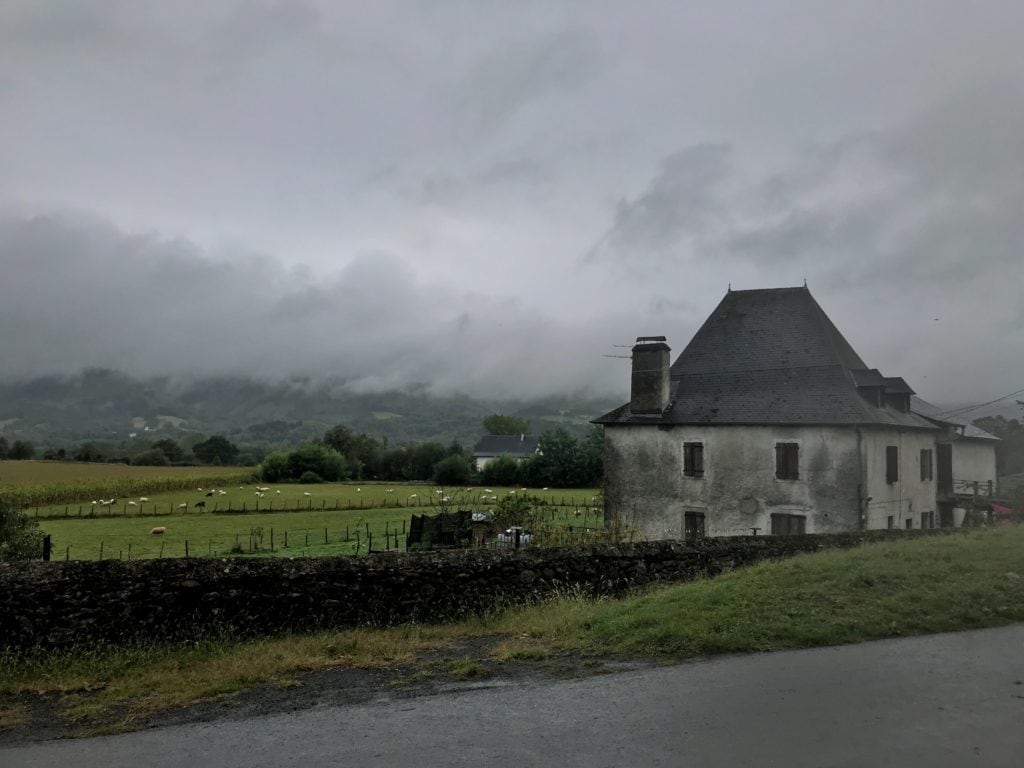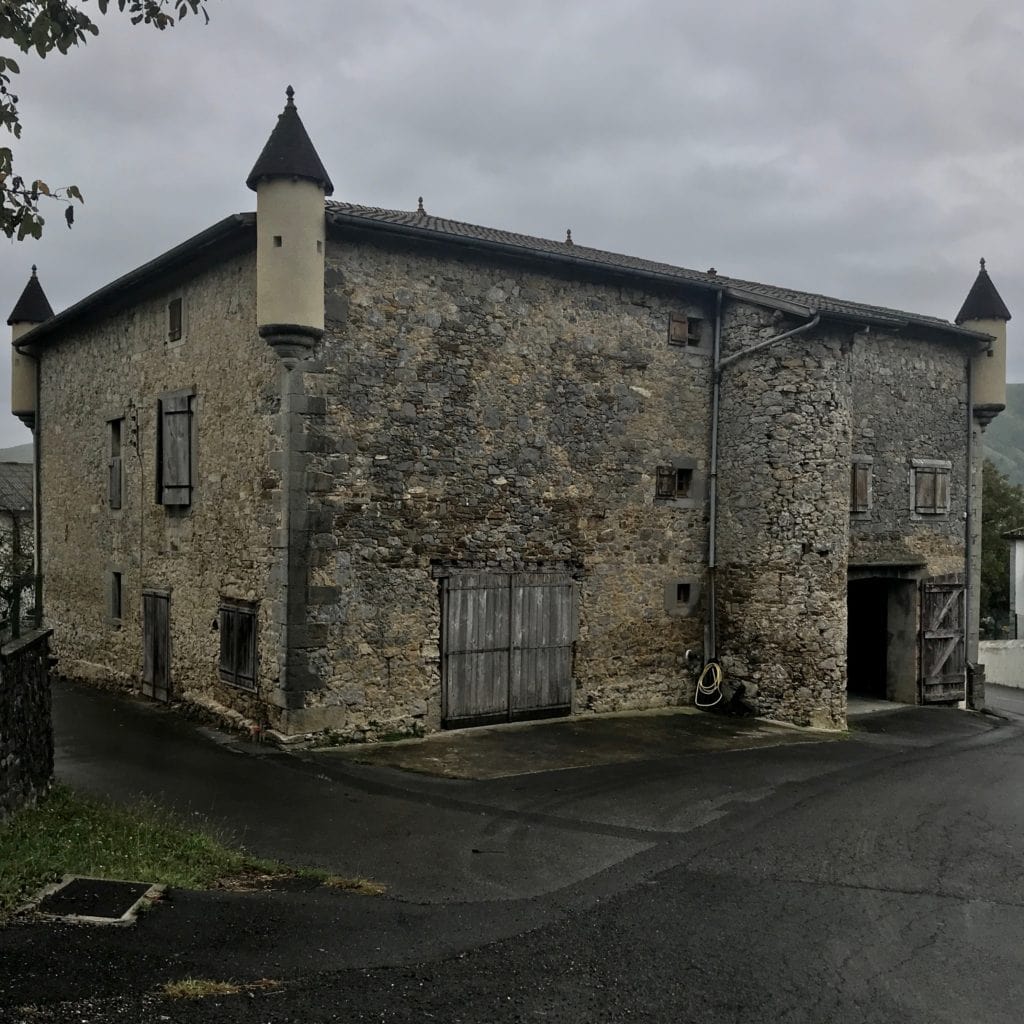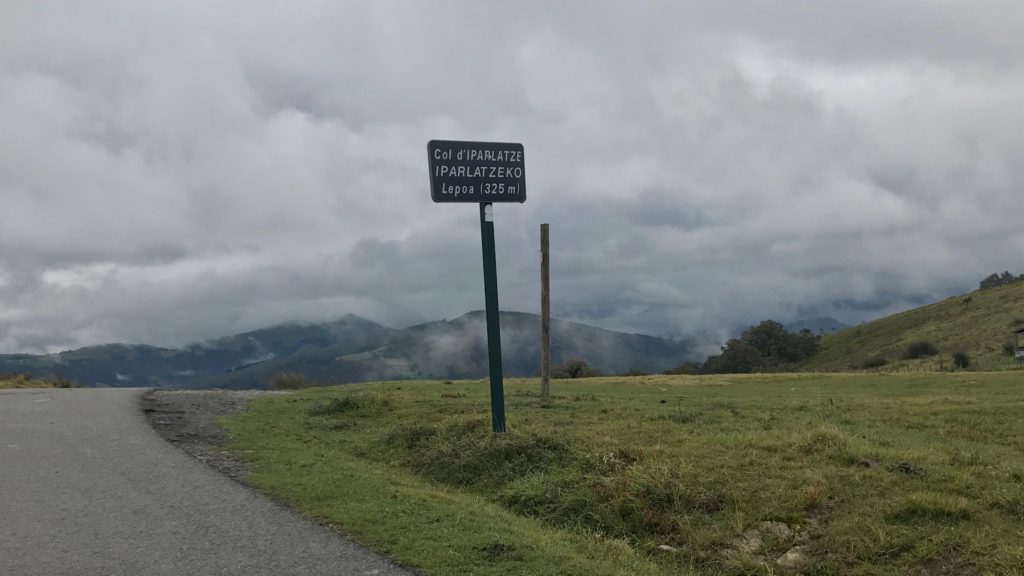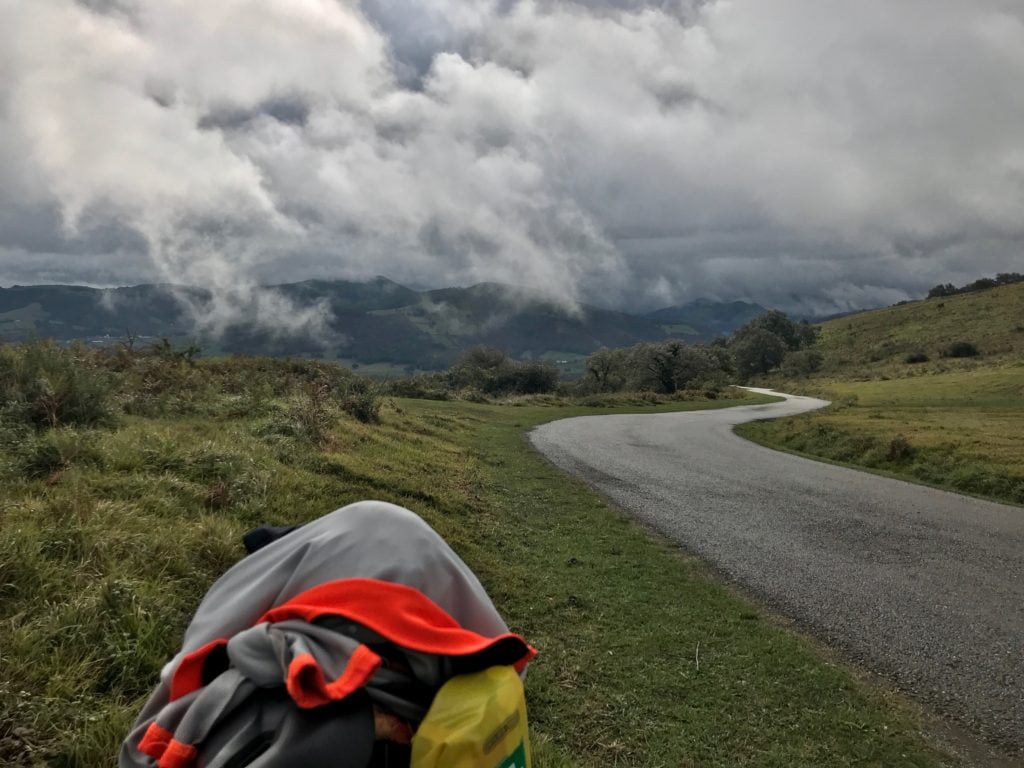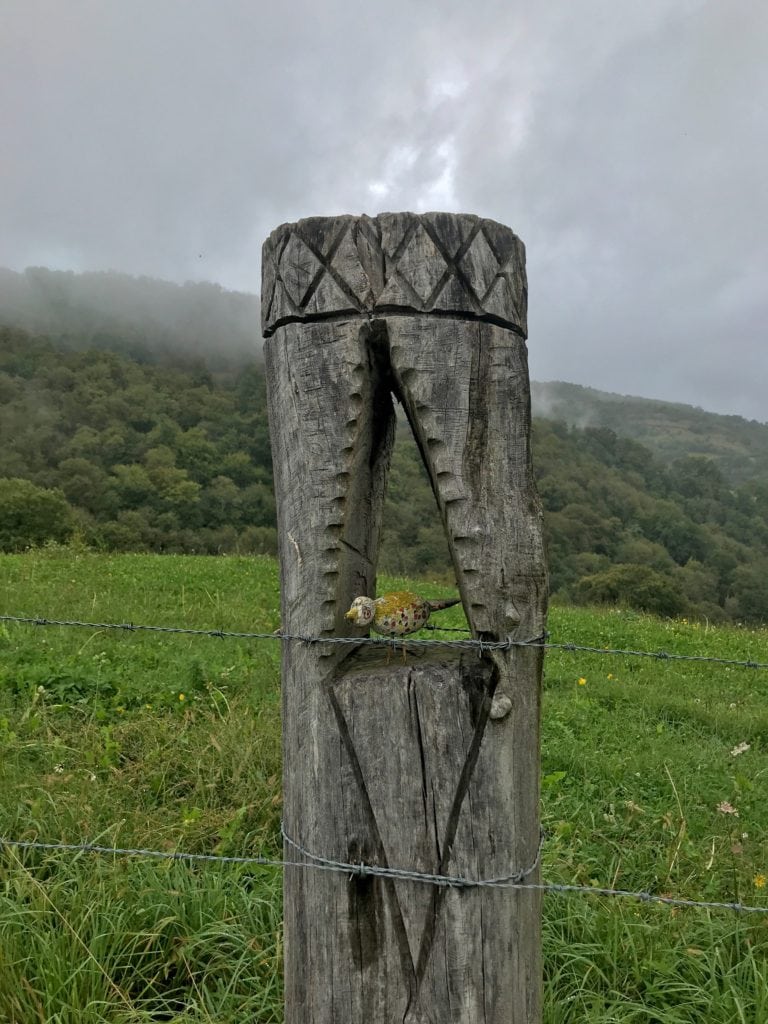- Distance: 189,8 km
- Vertical Ascent: 4.384 m
- No. of Named Cols: <TBC>
- Start Date & Time: 2019-10-04, 05:40
- Start Location: Z.I. La Negresse, Iraty, Biarritz
- End Date & Time: 2019-10-05, 00:15
- End Location: Ansó
- Time Moving: 12:32:07
- Moving Average: 15,1 km/h
- No. of Stops >3 Minutes: 18
Data: strava.com/activities/2767315555
Little sleep during the weeks leading up to the TPR, no sleep the night before, work-related distractions galore. While I was able to keep my training schedule, proper preparation and recovery had been lacking. This culminated in me still on the computer, only hours prior to race start. Rerouting around the Start Parcours, exporting .GPX tracks to multiple “Cloud” services and apps. Then hastily finishing packing of bike, equipment, the Tigger and myself, just minutes before joining all the other riders in La Negresse.
Race organization had split the field into six groups, starting 20 minutes apart from each other, for the TPR to comply with local regulations — and to avoid a chaotic mass start on the morning of a business day, just around the time buses, cars and commercial vehicles begin to crowd streets and access roads.
At 05:40 this morning, I was in the last group to set out from Biarritz. We sort of loosely filed in a long trek behind one another, a few meters apart, to avoid drafting, and positions would change while everyone found her or his pace. I was satisfied with my speed, despite my tiredness and having just waited outside for about an hour. But after only a few kilometers I had no choice but to stop at a picnic spot in the woods. Altogether three issues had cropped up and needed fixing:
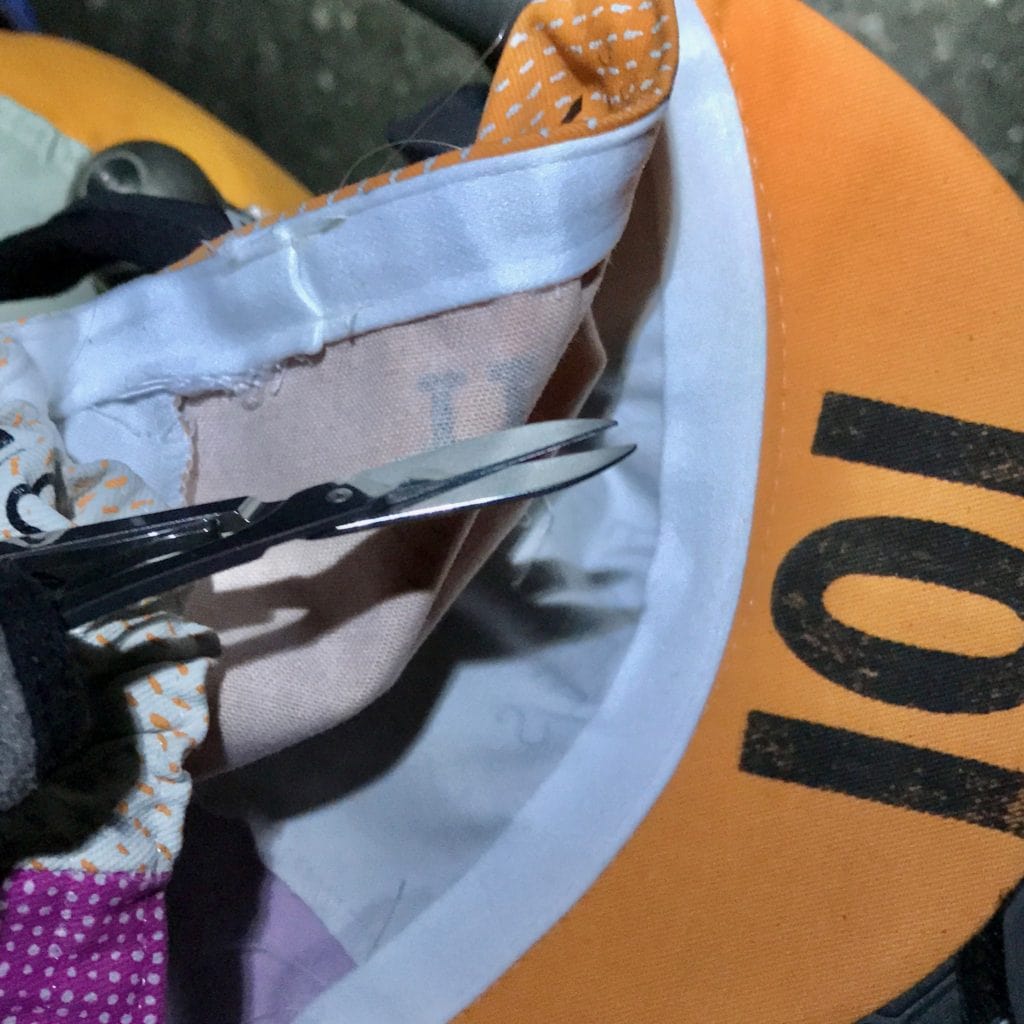
- The small, yellow stuff bag meant to make daily necessities accessible and portable, independent of any other bag was dangling too low and rubbing the rear tyre. This had been one of the hasty early morning improvisations. And fortunately, I had packed a set of extra straps that now came to good use. But I think I’ll have to rethink the concept for future events.
- Much more annoyingly, over the first two hours in my kit, I had developed a nasty headache from the TPR cap being too tight — too small. In an attempt to not irreversibly damage the cap but still increase the size/diameter, I decided to partly undo first one seam (maybe another one later) and split the elastic band. Don’t get me wrong: I adore my cap number and really like the cap design, funny how well it actually goes along with my other kit, but in order to wear it, it had to be mutilated, sorry, PEdAL ED.
- And, in another episode of semi-disappointment with my Elemnt ROAM, I had to deal with some map issues. But this now threatens to develop into a genuine rant … let’s keep it separate. Maybe I’ll do a dedicated post in relation to my tech for the TPR.
After this lengthy stop and less than an hour of actual riding, in the dark, I hit the tarmac, hard. It was just a minor crash, followed by a slide of a few meters into the curb, on a three-way crossing where the mandatory route took a left turn into a very subtle climb (ca. km 17 of the Start Parcours). Coming over a hill, out of a short but fast 7% descent, I had slowed down — though not enough.

The road surface was a bit wet — nothing I had not handled before. It wasn’t truly raining yet, just fog and drizzle. But I guess I underestimated the pervasiveness of manure. And my tiredness. The moment my front wheel slipped and had the rest of the CAAD12 with all extra weight crash on the non-drive side I thought, “it’s not cold enough for black ice!”
My body caught the brunt of the fall, tarmac and dirt like sand paper ripping through the arm of my Perfetto jacket and the base layer as well as the left knee warmer. The quick-release lever of the rear wheel also lost some grams of material, as did the aluminum housing of the front light. Later I would discover some weight optimization on the left brake lever too. Ah, yes, and my entire cockpit was a bit disfigured, with two zip ties torn that attached one of the carbon tubes to my aerobars. Those tubes serve as universal mount points for electronic equipment and front baggage, and the simplistic construction had proven very sturdy over the past years, so I wasn’t worried.
The driver of a car coming out of the road I just missed so spectacularly had witnessed everything and was really concerned about my safety. But I could reassure him that I was alright: as with similar crashes earlier in my life, the best therapy always is to quickly assess physical injury (I hadn’t hit my head, nothing seemed broken, apparently a slight contusion to the hip, cuts and road rash on elbow and knee didn’t bleed much but would need to be tended to later) and check the bike for critical damage (none, it seemed rideable, but the cockpit required some straightening, as well as everything had to be thoroughly inspected once daylight and/or a dry place could be reached).
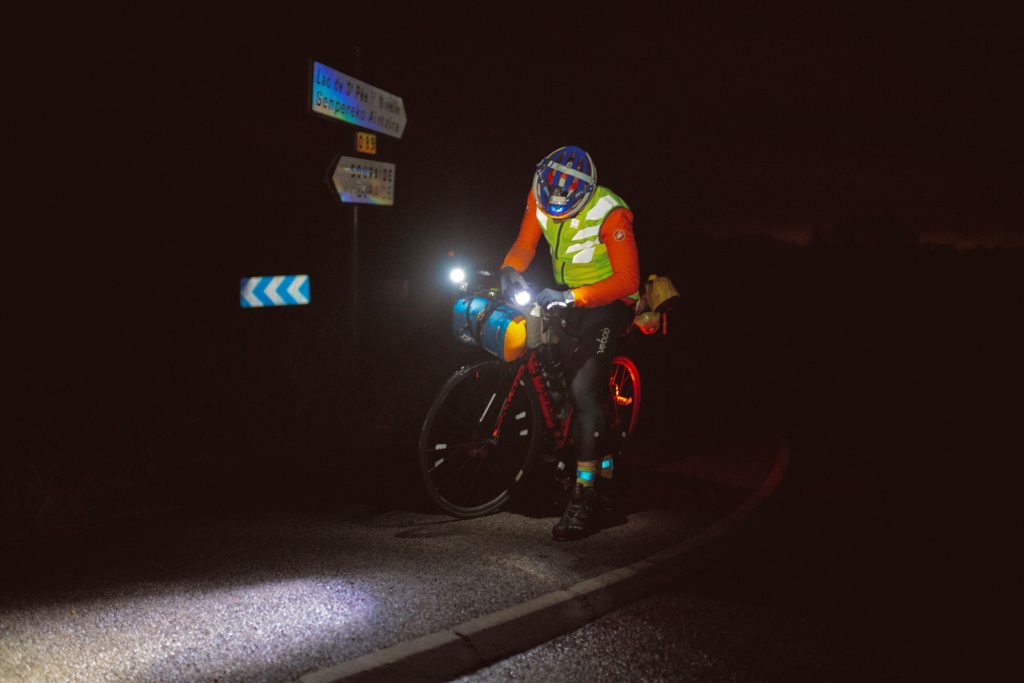
While I was still dealing with the cockpit and checking lighting, accessories and bags attached to the carbon/zip-tie/aerobar construction, an SUV turned into the road in my direction, pulled over, stopped, and out jumped Tom Hardie: it was one of the two Control Cars of the race, and while I was busy getting back on my bike Tom’s camera clicked ceaselessly. The one resulting picture I found so far is pretty neat and even captures the Tigger in all its glory.
In the hours after the crash/slide I continued very slowly as indeed some issues with the bike became apparent. I fixed what I could from one stop to the next, and started looking out for a bar or restaurant, by now deep in Basque Country. But in all these early hours, and dusk turning to twilight turning to a glum and gray morning, I was in great mood altogether. Especially because of the cows and sheep all around. And the colors. And the roadsigns.
When I reached Hélette and asked about anything solid to go with my coffee at the local pub/restaurant, the owner pointed across the main square to a small shop. “Get your bread, cheese and pastries there, then I’ll make the drinks.”
After all, I spent about two hours in Hélette, working on my wounds, my bike, my appetite, proactively recharged some electronics, had three or four coffees, a lot of (tasty) junk food and a bit of conversation.

Back on the road and back “in the flow”, continuous pedaling turned into solid progress for a while. Until around Behaune a routing error on my part took me deep into the hinterlands. Whereas the narrow country road passed by truly picturesque spots, eventually I reached a junction where two farmers confirmed that the overgrown muddy path I had planned to take would not be a good choice. And, there had already been another rider earlier today. Actually, what the heck were we doing out here? Riding from Biarritz to the Mediterranean, and back again. Oh, that takes some guts, “zorte on!” (Basque for “Bonne journée!”, “Have a good day!”).
OK, option A: continue over sketchy terrain; option B: turn around, retrace, follow the main roads roughly eastward for a while, and in the meantime choose a different route to arrive at the start of the big climb up to La Pierre de St. Martin. I opted for B. Targeting Musculdy for orientation, I had already identified what seemed a good route. Unless, I should have looked at the vertical profile more closely, especially the gradients.
What was the second routing mistake on my part in short succession resulted in up to a thousand meters mostly avoidable vertical ascent over several hills, with stretches of 10+ (up to 20%) gradients. But I got the first col sign photographed. Had a reason to stop for a moment and enjoy a short-lasting, half-sunny intermezzo with stunning views all around. Compensation.
For most of the remaining daylight hours, a mild drizzle turned into rain, and temperatures dropped. This wasn’t so bad in and by itself, as I was prepared for exactly this mixture of weather. But I also noticed my tiredness return accompanied by the first time of me feeling cold.
While the Basque people I’ve met so far are extremely welcoming and the region is totally beautiful, even in the rain, what stands out is the scarcity of cafés, bars, restaurants … any place to rest, warm-up and “refuel”, in most of the villages and towns I passed. The further I rode, the more I longed for a small shop to change and reorganize my clothes and to probably dry a little while having a snack and coffee in a well-heated room.
When I eventually found a bar in Camou-Cihigue, there was no food, and the inside of the stone building offered only a minor improvement in warmth, but it was dry, and the owner enjoyed the break in TV monotony in a room without any other guests as much as I cherished the hot tea and conversation. As to the lack of similar establishments along my route, I was told that only a few years, maybe two decades back, there were probably three to five bars and restaurants in communities of this size. With more and more people moving to the bigger towns and cities, locally, everything seems in decline. Even social life.
Despite everything I managed to increase at least my perceived core temperature. I knew I would have to find something to eat before the climb, and it became very obvious that CP1 would only be reached at night.
Riding on, I passed a pair of proud Basque dogs, guarding their respective properties but not making a fuss about the orange-black cyclist rolling past. Apart from one huge example with a more aggressive temper, running alongside me for a short while, no scary encounters of the canine kind so far today. As I usually really enjoy the presence of dogs, especially the bigger ones, their laid-back attitude also seemed to reflect the region as a whole.
My route choice via Camou-Cihigue had been a deliberate detour, keeping to the smaller roads, taking in more of the surrounding landscape. Following the D149, I saw that some of the wooden posts of the barbed wire fences around the meadows carried carved tops, and some had even been turned into unique pieces of art, resembling totems or other tokens of worship.
Less than an hour later I found the food & rest stop I had been longing for at Licq-Athérey: When I saw the door to a bar right to the side of my route ajar, with people sitting around a table, I didn’t mess around, parked my bike and asked if they’d serve me something to eat. At the first moment, everyone seemed baffled, but quickly curiosity took over and the owner spontaneously prepared a dinner of sorts. Over the course of about half an hour, this turned into a full menu, and my spirits went flying. I was in such a good mood that when, just as I was about to leave, cap no. 26, John Dixon, rolled to the doorstep, I had to recommend he get the same treatment and also enjoy a proper Basque dinner.
Daylight was already fading, on I went, and now the part of continuous ascents up to the summit at the border to Spain began.
I had occasionally checked how the race unfolded on the tracking page, and I knew I was among the last and slowest riders. Tonight I might be able to keep my place, but there was a pair, cap numbers 113a (Stephen Dalton) and 113b (Paul Williams) as well as cap number 99, solo rider Rickard Lindborg still moving close behind me.
I also expect John Dixon to also catch up again on Day 2. And I have already decided not to compete with anybody or anything but my own mind and body.
What really made the way up to La Pierre de St. Martin a much less exhausting and also enjoyable experience was that …
- I like riding at night;
- constant climbs ensure constant production of body heat above normal levels, so rain and and cold actually didn’t matter and I could even ride in lighter kit, keeping the warmer layers packed away and dry;
- my strategy (in training and equipment) of maintaining a relatively high cadence, even while climbing, paid off and I really wasn’t having any issues with knee pain or muscle cramps.
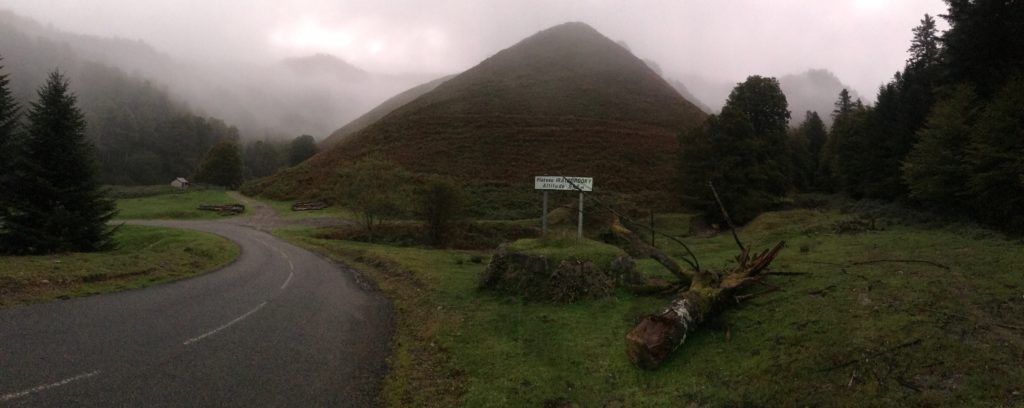
And in overcast nights, there are less distractions. Focus is on what you see through the shine of your headlights and what you hear through any noise you make yourself. Shortly before reaching the summit, I noticed bike lights behind me, and not long after, Stephen, Paul and some other rider who might have been Rickard passed me. But all of us stopped at different moments, to put on different/extra layers for the descent and cold night ahead, positions were reshuffled several times.
On the Spanish side of the mountain, the night turned from misty and wet to clear and cold. I shivered my way down the first, long descent and the next climb couldn’t come quickly enough for me to heat-up again. Still, I had to stop for a rare photo opportunity: While descending, I had spotted one or two glistering streaks of black and yellow in the middle of the road. Now, I had to know if I was hallucinating already.
No, I wasn’t. And yes, these black and yellow things turned out to be what I had suspected: Fire Salamanders, with their characteristic contrasting pattern of bright yellow dotted lines on perfectly black skin. Never had I seen a living specimen, let alone in the wild. But I always liked their appearance from illustrations in children’s books, adverts and photographs elsewhere.
For Ansó I had booked a room and warned my host that I might only arrive after midnight. When I got there around 00:15, we stored my bike in the spacious garage underneath the hostel. I decided to take all baggage up to my room to assess and reorganize how everything was packed. And, I had an inkling I might need warm clothes for the night. After a nice hot shower went to get my brevet stamped. At CP1, I heard of accidents with cows and other nightmarish tales, and of first riders who scratched. I also explained that I planned to take it slow, in order to recover from my lack of sleep and the exhaustion coming along with that.
While I managed to upload quite a number of pictures to Flickr and have IFTTT automatically populate my Twitter timeline, blogging in the way I intended to wasn’t happening: Writing quality posts while pedaling is not feasible. With better speech recognition, maybe. And my Strava update is pending, as I need to join several track fragments that originated from me repeatedly switching between Elemnt ROAM and BOLT.

